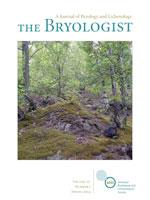This article presents a reconstruction of the development of the ombrotrophic Gązwa peatland based on a high-resolution macrofossil analysis and AMS dating. Successional changes in the plant assemblages dominated by Sphagnum were influenced mainly by climate changes. Local fires occurred in the peatland, but did not have a substantial impact on the Sphagnum succession. The disappearance of the first stage of the ombrotrophic peatland, which was dominated by Sphagnum magellanicum and Sphagnum angustifolium, resulted from a decrease in the water level that was also recorded at a number of sites in Europe in approximately 3750 BC. The development of Sphagnum fuscum/rubellum assemblages in approximately 350 BC corresponds with a climate cooling that resulted from low solar activity. The re-appearance of Sphagnum magellanicum in approximately AD 1650 corresponds with the Maunder Minimum of the Little Ice Age. The recent dominance of Sphagnum fallax is a result of the drainage of the peatland and of changes in the nearby vegetation. The paleoecology of Sphagnum contortum is also discussed. In the Gązwa peatland, S. contortum occurred during two periods, 3700–3300 BC and 2850–2000 BC. The fossil occurrence of S. contortum in the Gązwa peatland corresponds with its modern ecological requirements in the northern hemisphere. S. contortum occurred in the rich fen phase with Carex lasiocarpa, Comarum palustre, Menyanthes trifoliata and Meesia triquetra. The disappearance of S. contortum is assumed to have been caused by a trophic shift and the succession of a more acidophilic species, Sphagnum obtusum.
How to translate text using browser tools
19 March 2014
Sphagnum succession in a Baltic bog in central-eastern Europe over the last 6200 years and paleoecology of Sphagnum contortum
Mariusz Gałka,
Mariusz Lamentowicz
ACCESS THE FULL ARTICLE

The Bryologist
Vol. 117 • No. 1
Spring 2014
Vol. 117 • No. 1
Spring 2014
Baltic bog
fossil mosses
Holocene
paleoenvironmental reconstruction
Paleohydrology
Poland
solar activity




